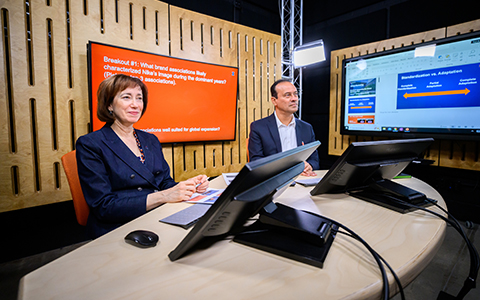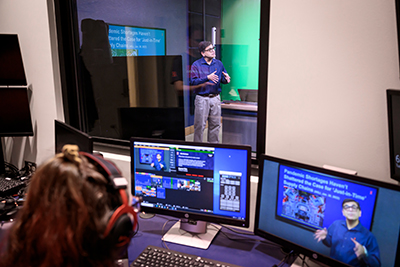Oct 03 Business Administration Faculty Student
Choosing the Right Online MBA Program: A comprehensive guide to asynchronous, synchronous, and hybrid programs

The rise of online MBA programs has made business education more accessible than ever. As working professionals seek flexible ways to earn an MBA degree online, it’s important to understand the different formats available. Online MBA programs generally fall into three categories: fully asynchronous, fully synchronous, and hybrid models like the online MBA at the University of Illinois’ Gies College of Business - known as the iMBA. that combine both. Each format offers a unique structure that may align better with different learning styles, professional demands, and personal preferences.
- Online Asynchronous MBA Programs
In asynchronous MBA degree programs students can access course materials, including lectures, readings, and assignments at any time. Without set class meeting times, this format can be the accessible option for learners balancing work, family, and other commitments.
These programs are well-suited for self-directed learners who prefer to manage their own schedules. However, they require strong time-management skills and may lack real-time interaction with faculty and peers. While discussion boards and email communication are standard, some students may miss the dynamic engagement that comes with live sessions.
Asynchronous formats are often found in business programs that emphasize accessibility and flexibility above all else. They allow students to take online MBA courses at their own pace but may offer fewer opportunities for real-time feedback and collaboration.
- Online Synchronous MBA Programs

Synchronous MBA programs require students to attend live virtual classes at scheduled times. These sessions often mirror the structure of in-person classes, featuring live lectures, group discussions, and Q&A with instructors. This format provides greater structure and real-time feedback, which can enhance accountability, engagement, and community building.
Students in synchronous programs benefit from regular interaction with faculty and classmates, which can lead to stronger networking and collaborative learning opportunities. However, this format can be challenging for students in different time zones or those with unpredictable or busy work schedules.
Synchronous delivery is common in business schools that aim to replicate the traditional classroom experience in an online format. It may suit learners who value more structure and direct interaction as part of their business education.
- Combining Asynchronous and Synchronous Learning
Some online MBA programs blend the flexibility of asynchronous learning with the interactive nature of synchronous sessions. These programs typically feature recorded lectures and readings that students can complete on their own time, along with scheduled live sessions for discussion, application, and group work.
Gies College of Business offers a fully online MBA that follows this combined-format model. In the Gies Business iMBA, students engage with weekly live sessions offered at multiple times to account for differing time zones and scheduling constraints, which allow for real-time interaction with faculty and peers. While attendance at live sessions is highly encouraged, they are recorded and available to watch on demand for those needing greater flexibility. These sessions are complemented by high-quality recorded content and course materials that students can review at their convenience. This structure supports both flexibility and engagement, making it a practical choice for working professionals.
Hybrid programs often emphasize experiential learning by integrating projects, simulations, and collaboration into both the asynchronous and synchronous components. In the Gies Business iMBA, for example, students take part in real-world business challenges and group-based projects that simulate workplace environments, giving them practical skills they can immediately apply.
In addition to engaging learning opportunities, a combination of synchronous and asynchronous learning allows for more flexibility and time to build your network. Every year, iConverge provides an optional opportunity for learners in Gies Business online programs to visit campus, interact with fellow learners and alumni, engage with faculty, and create lasting impact and connections. Learners are also encouraged to participate in in-person and virtual immersion experiences, and attend local meetups with their cohorts and alumni from the College. These touch-points serve as opportunities for engagement and to make lasting connections that extend far beyond the classroom.
Choosing the Right Format
Selecting an online MBA format depends on many factors, including personal learning style, career goals, and time availability. Some students thrive in self-paced environments, while others prefer the accountability that comes with scheduled sessions. Many working professionals find that hybrid programs strike the right balance, offering both structure and flexibility.
It’s also worth considering how each format incorporates experiential learning, which has become a cornerstone of effective business education and a core component of the Gies Business experience. Programs that include hands-on projects, team collaboration, and real-world applications often provide a deeper understanding of key business concepts.
The landscape of online MBA education is diverse and evolving. Whether you’re interested in asynchronous flexibility, synchronous interaction, or a hybrid approach, today’s online business programs offer options to meet a wide range of needs. Programs like the iMBA at Gies College of Business demonstrate how hybrid models can provide a well-rounded, accessible, and engaging business school experience entirely online.

